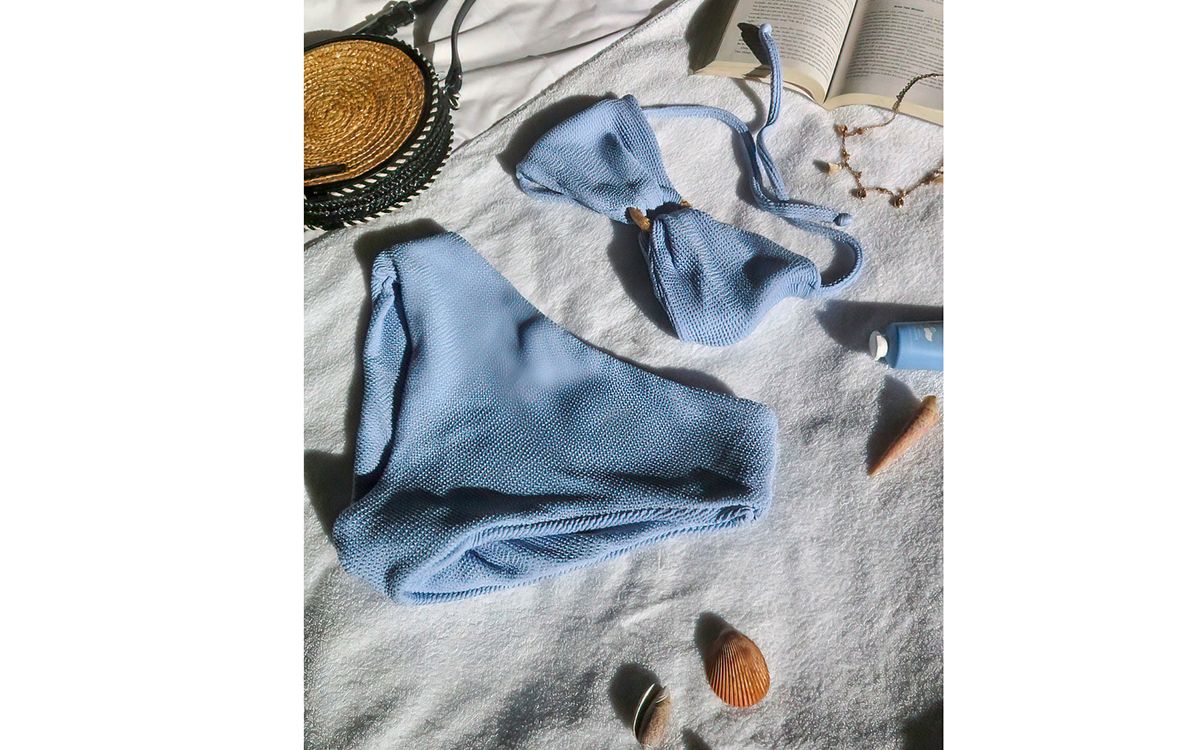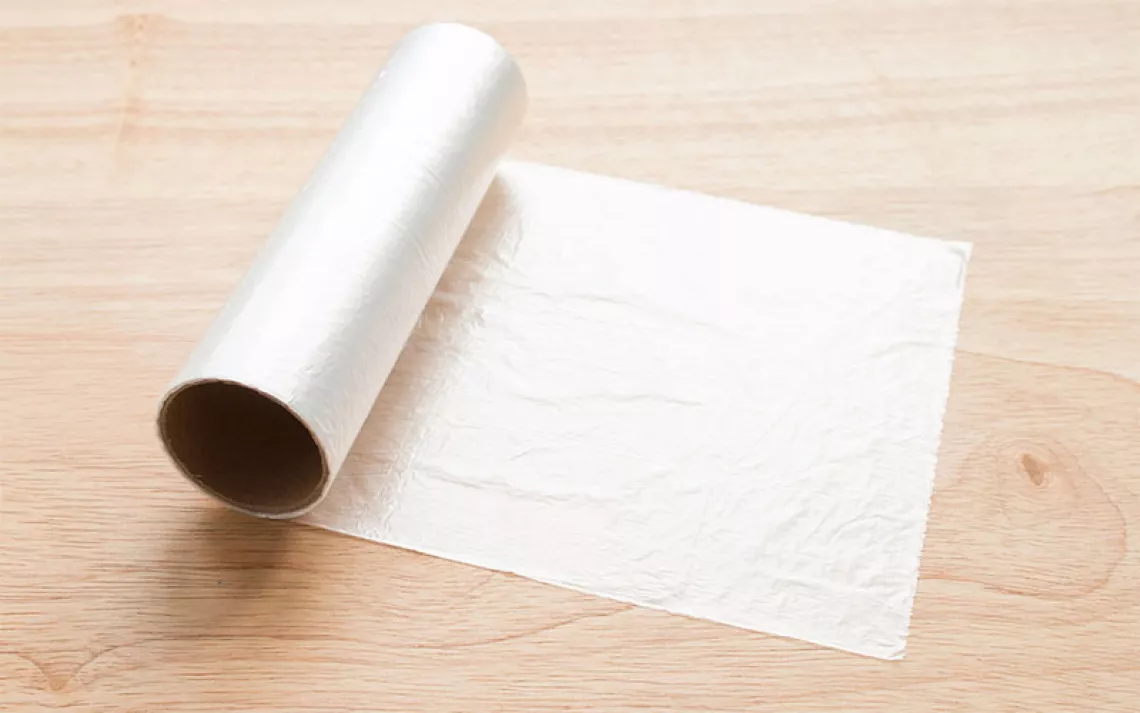Dive Into the Emerging World of Sustainable Swimsuits
Now there are suits that won’t trash the planet
In four decades of swimming, I went from racing champ to swim teacher to coach to lap swimmer; and, of course, none of it was accomplished without my suit. I’ve had heaps of them over the course of my swimming life, and even used their sun-bleached and stretched-out leftovers as “drag suits” (worn on top of a newer one) to create resistance in the water for training. After a point, they would literally degrade in my hands. Today, I squirm at the thought. The problem? Shedding plastic.
In order for a snug fit that doesn’t sag—or worse, fall off—during time in the water, suits are made with plastic-based synthetic fabrics that can stretch along with movements of the body. Nylon, spandex, and polyester excel at this feat. These fabrics are also versatile, excellent at wicking moisture, quick to dry, and much cheaper than natural fibers—the makings of fast-fashion nightmares. It’s no wonder that an estimated 65 percent of all fibers produced each year are synthetic, used in swimwear and other garments.
While these materials are great for helping us maintain our dignity, and for reducing friction in the water, they also shed tiny pieces of plastic when washed. These microfibers end up in the ocean, where they enter our food chain after sea animals ingest them. The effects of this phenomenon are still unknown. According to a report by the World Economic Foundation, in the current trajectory, the weight of plastics will overtake the weight of fish in the ocean by 2050.
To be truly eco-friendly, well, the answer is skinny dipping. Failing that, choose suits made from natural fibers, such as cotton, hemp, or linen. Natasha Tonic uses a fair-trade fabric in her suits, using a blend of hemp, certified organic cotton, and 4 percent Lycra. (While Lycra is plastic-based, a little is needed to add proper structure to the fabric and also adds durability to the suit, making it last longer.)
Of course, natural-fiber suits (or naked bodies) aren’t suitable for all water activities. Despite some obvious downsides, synthetic fibers have one amazing quality—manufacturers can reuse them over and over again to create a closed-loop system. This is where sustainability and swimwear are, at long last, starting to meet.
Recent technologies have fortunately introduced an array of recycled plastic materials that are ideal for swimwear, including ECONYL® and REPREVE® nylons. Fabrics made from these materials provide the same properties as those made from virgin plastic, while helping to offset the use of new petroleum, emit fewer greenhouse gases, and conserve water and energy use. ECONYL®, used in Everlane’s newly announced swim line, is purported to reduce the global-warming impact of nylon by up to 90 percent. The creation of this material also helps to minimize waste that might otherwise be placed in a landfill or the ocean, including abandoned fishing nets, discarded carpets, fabric scraps, and other industrial plastics. REPREVE®, used by MG Surfline and Vitamin A, is made mostly from post-consumer PET bottles to manufacture a 100 percent recycled polyester material that is chlorine-resistant with UPF 50 sun protection. The company maintains that its product has kept up to 10 billion bottles, to date, out of the waste stream. In theory, these fabrics create no waste and use no new resources.

prAna Swimwear
As an avid swimmer, I’m happy to report that it isn't hard to find upcycled swimsuits. A slew of boutique brands, such as Swiminista and Bold Swim, currently manufacture options for a wide range of lifestyles, fits, and styles. These smaller brands tend to be focused on both pro-environmental and ethical practices, such as ensuring Bluesign certification on garments to ensure safety for the end user, workers, and the environment. prAna has reduced plastic and excess waste in its packaging and has established a Responsible Packaging Movement (RPM) for other brands to join and learn from. Summersalt is committed to making its garments last as long as possible, to keep consumers from having to continue the buying cycle. The company claims its fabric is five times stronger than regular swimwear, with increased compression capability, adding comfort along with durability.

Swiminista swimwear
Even better is the availability of sustainable choices for the mass market, which is where the greatest leaps in material innovation and production will be made. Athleta, an active lifestyle brand owned by Gap, has worked for several years to create its own proprietary recycled fabric called H2Eco. The lap swimmer in me is happy to know that Speedo—the undisputed leader in performance swimwear and the first company to make a non-wool suit in 1928—works closely with Aquafil, the creator of ECONYL®, to innovate new materials and practices. In 2015, the companies announced the swim industry’s first take-back program, which collects post-manufacturing scraps to be upcycled into regenerated ECONYL® nylon. The company uses ECONYL® in its Powerflex Eco suits, and is rolling out lines using REPREVE® in coming seasons.
But how do sustainable suits fit?
Despite the wide range of options available, I was worried about the fit of the suits themselves. Would they feel and fit like a “regular” suit? I tried out suits from prAna, Bold Swim, and Swiminista, and all of them far exceeded my expectations. Not only were they indistinguishable from a “normal” suit, but the fit of the Swiminista was better than any suit I’ve ever owned. While the styling is more luxe than I typically go for, the feel matched my needs to a T. The fabric, made from unbranded recycled polyamide (the same material as ECONYL® and REPREVE® fabrics) and elastane, is luxuriously soft and supple. I was also excited to try a Bold Swim suit, which is made using an enhanced polyamide yarn called Amni Soul Eco®—a fabric with the unique ability to biodegrade. Don’t worry, it won’t begin to do so in the water. The fabric was created to biodegrade only under landfill conditions, without the presence of oxygen and where specific bacteria is found.

Bold Swim bikini
Can you recycle old suits?
 Just like my drag suits, swimwear eventually runs out of life. If the key to a closed-loop system is to keep a material out of the waste stream, what’s the best thing to do? Reuse or recycle it. At Reformation (Reformation suit pictured, right), customers are encouraged to send their wearable products to ThredUp (an online consignment shop) and receive credit to spend at Reformation. They can also send old products back to be recycled by requesting a free shipping label from the company. Mara Hoffman works with The Renewal Workshop to extend the life of returned garments in need of repair; 945 pounds of garments have since been resold through the program. Its resale platform, Full Circle Marketplace, encourages customers to buy and resell lightly worn Mara Hoffman clothing. Check with your preferred brands for similar take-back and recycling programs.
Just like my drag suits, swimwear eventually runs out of life. If the key to a closed-loop system is to keep a material out of the waste stream, what’s the best thing to do? Reuse or recycle it. At Reformation (Reformation suit pictured, right), customers are encouraged to send their wearable products to ThredUp (an online consignment shop) and receive credit to spend at Reformation. They can also send old products back to be recycled by requesting a free shipping label from the company. Mara Hoffman works with The Renewal Workshop to extend the life of returned garments in need of repair; 945 pounds of garments have since been resold through the program. Its resale platform, Full Circle Marketplace, encourages customers to buy and resell lightly worn Mara Hoffman clothing. Check with your preferred brands for similar take-back and recycling programs.
How to minimize microfiber leakage?
Swimwear using recycled plastic is not a perfect solution. When these garments are soaked or washed, they still shed plastic microfibers that degrade the planet’s rivers and oceans with the potential to enter our food system. According to the New Textiles Economy Report (2017), around half a million tons of plastic microfibers are shed into the oceans annually during the washing of plastic-based textiles such as polyester, nylon, and acrylic every year. To minimize this when washing any plastic-based fabric, use a Guppyfriend Washing Bag. Be sure to remove the microfibers from inside the bag and dispose of them in the trash.
For the kind of active swimming I’m doing, I have to stick to suits that can (literally) keep up with me. I was skeptical at first that recycled fabrics would suit me—I mentally prepared for scratchy and ill-fitting material, but my experience made me a convert. With suits this comfortable, stylish, and eco-friendly, it doesn’t make sense to swim in anything else.
 The Magazine of The Sierra Club
The Magazine of The Sierra Club




